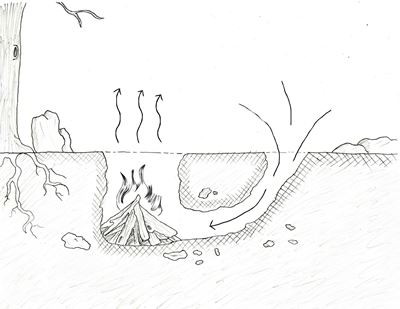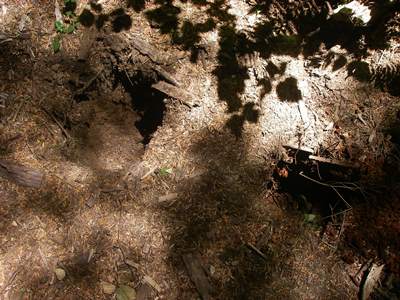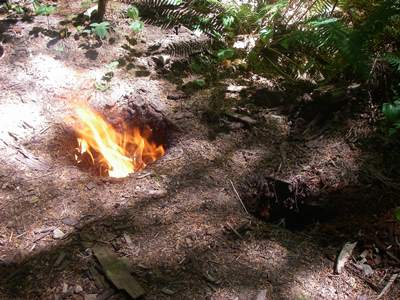Dakota Fire Hole
By Jeremy Williams
The Dakota fire hole is an ancient technique for building efficient, clean burning, and easily concealable fires. No one knows who first invented this method, but the basic concept can be found in various places and cultures throughout the world.
The Dakota fire hole consists of a hole dug approximately 12-16” deep into the ground. It must be wide enough to accommodate a small fire tipi. Then a sloping tunnel is dug connecting the base of the pit to the surface.
When you build a fire in the hole, it will heat the air around it. As the hot air rises out of the hole it creates a weak vacuum, drawing more cool air through the sloping tunnel. This feedback loop can create an extremely hot fire in a short amount of time. There are a number of advantages over a more conventional fire.
Advantages of the Dakota Fire Hole:
- It burns at a very high temperature due to the air intake system. A high temperature fire is more efficient at converting fuel into heat.
- It is easy to cook over. Just throw a grill or a bunch of green sticks over the top of the hole to create a backwoods barbeque.
- It is hard to spot from a distance because the flames are confined below ground level. A hot burning Dakota fire pit will produce very little smoke.
- It is also great in very windy conditions. The air hole will work more efficiently and the flames will be protected from extreme gusts.
The one downside is that it requires a large initial expenditure of energy to create. This can be a deal breaker in a wilderness survival situation. You generally can’t afford to spend a lot of time and effort digging through roots and rocks to create a fire hole in a short term survival scenario. It is a technique best reserved for longer term survival or primitive camping.
Site Selection
To minimize the amount of work you need to put into digging the fire hole, make sure to choose a site that does not have too many rocks or roots. You also want to avoid areas where the water table is very close to the surface for obvious reasons. Dry, compact soil is best. Too loose and the hole won’t be able to hold its shape, too compact and it will be a pain to construct.
One of the best advantages of a Dakota fire hole is that it requires less wood than a regular fire. This can be very important in areas without a lot of firewood available. Using less wood makes your energy use more efficient and it is not as damaging to the landscape. When you’re done with the fire, you can easily fill the hole in, leaving very little trace of your presence. Always remember to fully extinguish a fire before leaving it.
Overall the Dakota fire pit is an excellent tool to have in your survival skills arsenal.





No comments:
Post a Comment